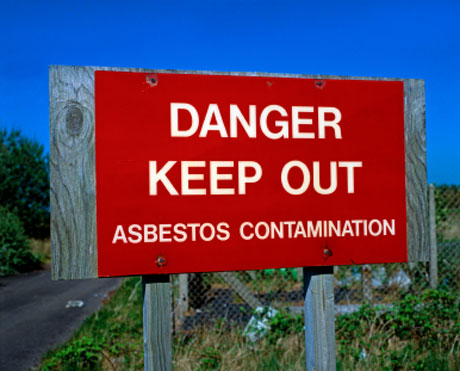
EPA to Move Aggressively on Cleanup and HHS to Assist Area Residents with Medical Care
WASHINGTON – U.S. Environmental Protection Agency Administrator Lisa P. Jackson today announced the agency has determined that a public health emergency exists at the Libby asbestos site in northwest Montana. Over the past years, hundreds of asbestos-related disease cases have been documented in this small community, which covers the towns of Libby and Troy. The announcement was made today at a joint press conference with Department of Health and Human Services Secretary Kathleen Sebelius and U.S. Sens. Max Baucus and Jon Tester.
This is the first time EPA has made a determination under the Comprehensive Environmental Response, Compensation, and Liability Act (CERCLA) that conditions at a site constitute a public health emergency. This determination recognizes the serious impact to the public health from the contamination at Libby and underscores the need for further action and health care for area residents who have been or may be exposed to asbestos. Investigations performed by the Agency for Toxic Substance and Disease Registry have found the incidence of occurrence of asbestosis, a lung condition, in the Libby area staggeringly higher than the national average for the period from 1979-1998. EPA is working closely with the Department of Health and Human Services, which is making available a short-term grant to provide needed asbestos-related medical care to Libby and Troy residents.
During her Senate confirmation hearing, Administrator Jackson committed to review the situation at the Libby asbestos site based on current site information, sound science and EPA’s legal authorities. As a result of her review, the Administrator has decided that conditions at the site present a significant threat to public health and that making a public health emergency determination is appropriate.
“This is a tragic public health situation that has not received the recognition it deserves by the federal government for far too long. We’re making a long-delayed commitment to the people of Libby and Troy. Based on a rigorous re-evaluation of the situation on the ground, we will continue to move aggressively on the cleanup efforts and protect the health of the people,†said EPA Administrator Lisa P. Jackson. “We’re here to help create a long and prosperous future for this town.†She added, “Senator Max Baucus has been a tireless advocate for the people living in Libby and Troy who have confronted this public health tragedy for generations and we commend him for his work. We look forward to working with him and Senator Tester who has been working diligently since being elected to the Senate to bring much needed support to these communities.â€
“Senator Baucus and Senator Tester have powerfully brought the voices of the people of Libby and Troy to Washington so the nation could hear and understand what happened. They refused to give up on finding the best ways to help those who have suffered so much. Today’s announcement reflects our Administration’s concern for the residents of Lincoln County and our intention to act decisively to protect and improve their health and quality of life,’ said Secretary Sebelius. “The Department of Health and Human Services has been working closely with the EPA and the residents of Lincoln County for a number of years to conduct screenings and help provide access to care. Now, we have come together with Senator Baucus and Senator Tester, Administrator Jackson, and agencies across HHS, to offer a new grant to provide short-term medical assistance for screening, diagnostic and treatment services in a comprehensive and coordinated manner in partnership with local officials on the ground in Lincoln County. “
Sen. Max Baucus, a long-time advocate on this issue, consistently sought out a determination of a public health emergency in this region.
“This is a great day for Libby. This is a town that was poisoned by W.R. Grace, then had to wait year after year as the last administration failed to determine that public health emergency exists. But today is a new day,†said Sen. Baucus. “Today is the day that Administrator Jackson did the right thing and made this vital determination. Today is the day that Secretary Sebelius declared that people in Libby will get the health care they need. Today is the day that after years of work we were able to succeed in getting this done. Yet, we won’t stop here. We will continue to push until Libby has a clean bill of health.â€
“This is a long-overdue, common-sense decision that will go a long way for Libby and the thousands of folks who were poisoned there,†Sen. Tester said. “This decision will help make quality health care more accessible and it will open the door to get new resources on the ground. We still have a long way to do right by the folks in Libby. Working together with the Department of Health and Human Services and the Environmental Protection Agency, we’re making very good progress.â€
Secretary Sebelius tasked two HHS agencies – the Health Resources and Services Administration and the Centers for Disease Control and Prevention/Agency for Toxic Substances and Disease Registry – to help county residents. These two agencies will support a new grant to assist affected residents who need medical care. Local officials are currently putting together a grant proposal that will lay out options for provision of medical care that will work for the residents of Lincoln County. HHS anticipates that this grant can be awarded in August 2009.
The Libby asbestos site has been on the EPA’s Superfund National Priorities List since 2002, and cleanup has taken place since 2000. EPA has made progress in helping to remove the threat of asbestos in the land and air, and with it, the increased risks of lung cancer, asbestosis, and other respiratory problems. While EPA’s cleanup efforts have greatly reduced exposure, actual and potential releases of amphibole asbestos remain a significant threat to public health in that area.
The Libby asbestos site includes portions of the towns of Libby and Troy and an inactive vermiculite mine seven miles northeast of the town. Gold miners discovered vermiculite in Libby in 1881; in the 1920s the Zonolite Company formed and began mining the vermiculite. In 1963, W.R. Grace bought the Zonolite mining operations. The mine closed in 1990. It is estimated that the Libby mine was the source of over 70 percent of all vermiculite sold in the United States from 1919 to 1990.
More information: http://www.epa.gov/libby
EPA, EPA Announces Public Health Emergency in Libby, Montana, June 17, 2009



